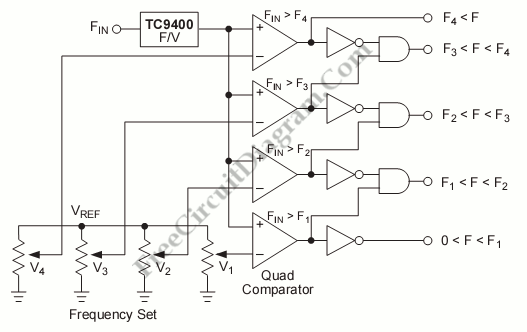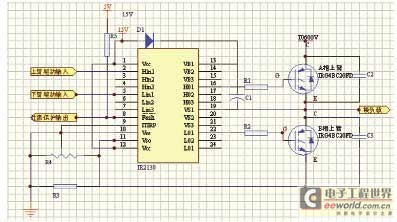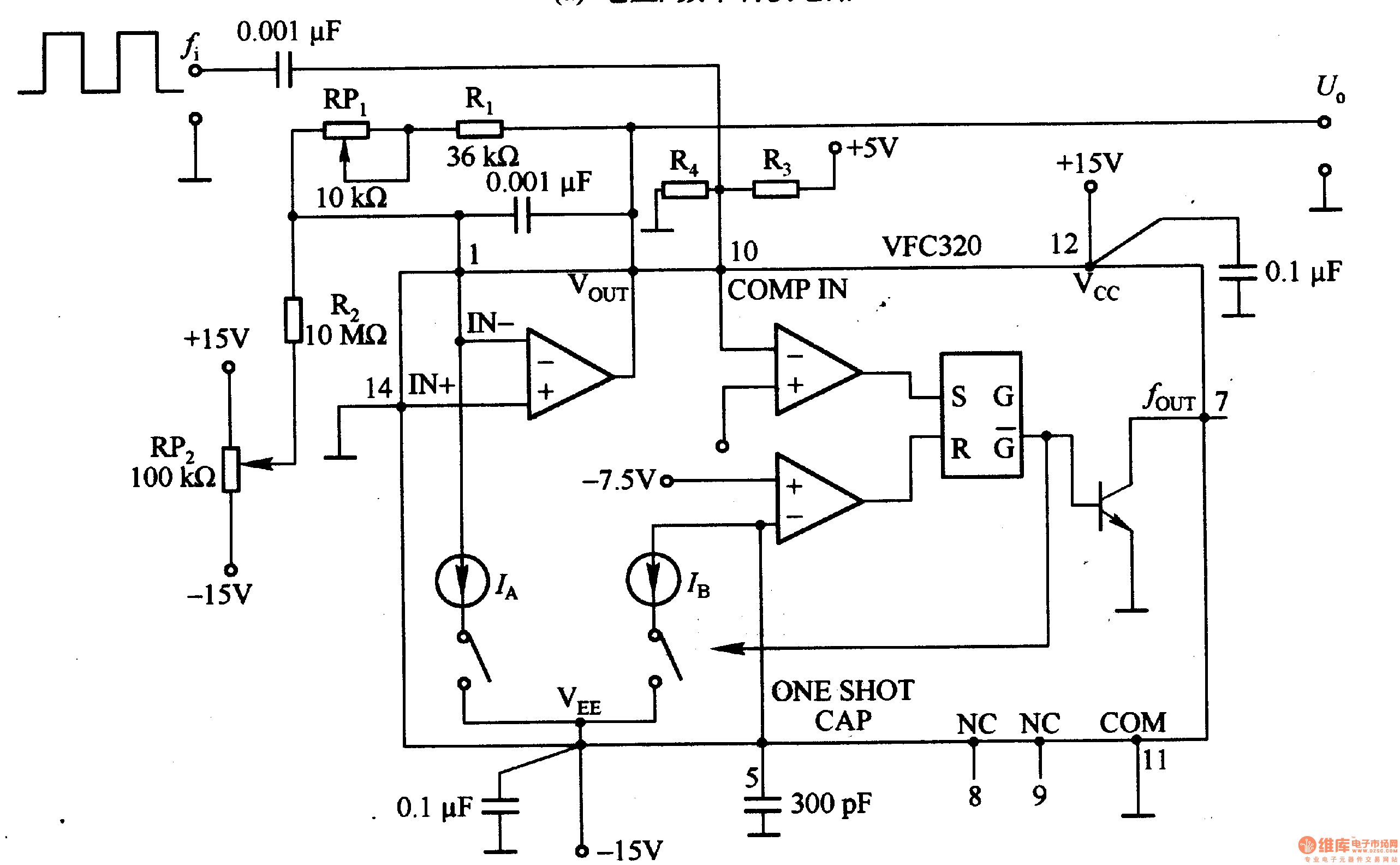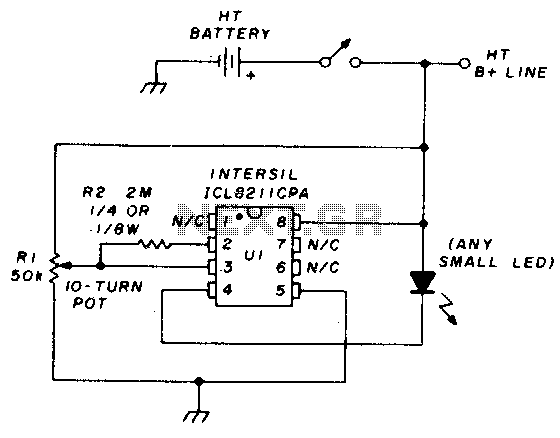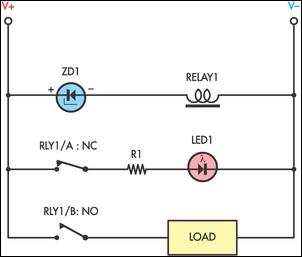
voltage to frequency converter
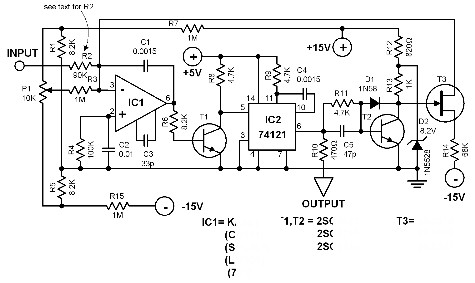
This voltage-to-frequency converter is designed to connect to a frequency counter to display the measured voltage value. This converter-counter combination creates an inexpensive yet functionally complete digital voltmeter. The circuit outputs TTL-compatible pulses that are 5 µs wide. The pulse frequency is proportional to the DC voltage being measured, with a conversion factor of 10 kHz per volt. When the input level is 0 V, the frequency output is 0 Hz. The resistor R2, in conjunction with capacitor C1, determines the conversion factor and is typically valued at around 90 kΩ. For optimal performance, it is recommended to use a metal film resistor for R2 in series with a multiturn trimmer resistor, allowing for precise adjustment of the resistance value. Resistors R9 and R14 should also be of metal film type.
The voltage-to-frequency converter circuit operates by converting an analog voltage signal into a corresponding frequency signal, which can be easily read by a frequency counter. The core of the circuit includes a resistor-capacitor (RC) network, where the resistor R2 and capacitor C1 play crucial roles in setting the time constant for the conversion process. The output frequency is generated through a comparator or Schmitt trigger configuration, which ensures that the output pulses are clean and adhere to TTL logic levels.
The choice of components is significant for maintaining accuracy and stability. Metal film resistors are preferred due to their low temperature coefficient and high precision, which contribute to the overall performance of the circuit. The multiturn trimmer resistor allows for fine-tuning of the resistance, enabling the user to calibrate the converter to achieve the desired conversion factor accurately.
The output pulse width of 5 µs ensures compatibility with standard frequency counters, allowing for reliable measurement of the frequency output. As the input voltage increases, the frequency output increases linearly, making it straightforward to interpret the voltage level based on the frequency reading. The design is particularly suitable for applications where a digital readout of voltage is required, such as in laboratory settings or for educational purposes, providing a cost-effective solution without compromising functionality.
In summary, this voltage-to-frequency converter circuit is a versatile tool for converting DC voltage levels into easily measurable frequency outputs, with careful consideration given to component selection to ensure precision and reliability.This voltage to frequency converter is designed to be connected to a frequency counter to display the voltage value being measured. This converter-counter combination produces a cheap but functionally complete digital voltmeter. The circuit delivers TTL compatible pulses which are 5 µS wide. The pulse frequency is proportional to the DC voltage b eing measured. The conversion factor is 10 kHz per volt. When the input level is 0 V the frequency output is 0 Hz. The resistor R2 (together with C1) determines the conversion factor and has the value of around 90 K. To achieve best results use a metal film resistor for R2 in series with a multiturn trimmer resistor.
This multiturn resistor will enable you to set the correct resistance value. Resistors R9 and R14 must be metal film types. 🔗 External reference
The voltage-to-frequency converter circuit operates by converting an analog voltage signal into a corresponding frequency signal, which can be easily read by a frequency counter. The core of the circuit includes a resistor-capacitor (RC) network, where the resistor R2 and capacitor C1 play crucial roles in setting the time constant for the conversion process. The output frequency is generated through a comparator or Schmitt trigger configuration, which ensures that the output pulses are clean and adhere to TTL logic levels.
The choice of components is significant for maintaining accuracy and stability. Metal film resistors are preferred due to their low temperature coefficient and high precision, which contribute to the overall performance of the circuit. The multiturn trimmer resistor allows for fine-tuning of the resistance, enabling the user to calibrate the converter to achieve the desired conversion factor accurately.
The output pulse width of 5 µs ensures compatibility with standard frequency counters, allowing for reliable measurement of the frequency output. As the input voltage increases, the frequency output increases linearly, making it straightforward to interpret the voltage level based on the frequency reading. The design is particularly suitable for applications where a digital readout of voltage is required, such as in laboratory settings or for educational purposes, providing a cost-effective solution without compromising functionality.
In summary, this voltage-to-frequency converter circuit is a versatile tool for converting DC voltage levels into easily measurable frequency outputs, with careful consideration given to component selection to ensure precision and reliability.This voltage to frequency converter is designed to be connected to a frequency counter to display the voltage value being measured. This converter-counter combination produces a cheap but functionally complete digital voltmeter. The circuit delivers TTL compatible pulses which are 5 µS wide. The pulse frequency is proportional to the DC voltage b eing measured. The conversion factor is 10 kHz per volt. When the input level is 0 V the frequency output is 0 Hz. The resistor R2 (together with C1) determines the conversion factor and has the value of around 90 K. To achieve best results use a metal film resistor for R2 in series with a multiturn trimmer resistor.
This multiturn resistor will enable you to set the correct resistance value. Resistors R9 and R14 must be metal film types. 🔗 External reference
